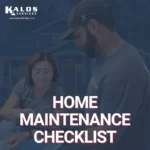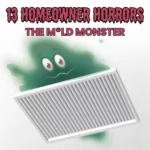It was the winter—college kids started getting ready to spend winter break with their families, and Ms. K was no different. She had been going to school in New England and was excited to see her family in Florida for the holidays. It wasn’t all sunshine, though; it would be her family’s first Christmas without their dog, Max. She loaded up the car with her belongings, including her small box of houseplants, and went home.
Within a couple of days, Ms. K started feeling like there was a thick blanket of negative energy over her that she couldn’t shake—she described it as a “haze she couldn’t see.” It wasn’t just her, either—her houseplants started yellowing.
One night, when she felt particularly “hazy,” she heard the jingling collar and soft “ruff” of a dog. Ms. K looked at the edge of her bed and saw a wispy gray tail turning the corner—it was Max, it had to be. The next morning, she told her parents she had gotten a visit from Max. They thought she may have been dreaming and brushed it off. Nevertheless, the collar jingling kept coming back almost every night.
When she returned to school, her Vermonter roommate asked how her break was. Ms. K told her about the haze and the ghost dog haunting her room. After a few minutes of polite and slightly weirded-out silence, her roommate asked, “Wait, Florida’s too hot for furnaces, right?”
“No, my parents have one in the garage. Why?”
“Your parents might want to check out the carbon monoxide (CO) levels.”
Ms. K told her parents about her friend’s suggestion, and they met with their HVAC contractor. As soon as he walked into the garage to look at the furnace, the low-level CO monitor on his belt shrieked. However, it wasn’t bad near the furnace. The technician approached the water heater, and that’s where the CO spiked. The water heater had a ring of rust around the venting. It was backdrafting, spilling CO into the garage. It was also pressed against the wall separating the garage from Ms. K’s room.
The contractor then walked into Ms. K’s bedroom, and his CO monitor went off again. It wasn’t a deadly amount, but it was quite a bit higher than what’s considered “safe” for long-term exposure (0–9 parts per million is “safe”). CO was traveling through cracks in the walls to Ms. K’s bedroom.
Ms. K ended up being okay, but CO poisoning is a common and preventable cause of illness and death in Americans with gas-fired appliances. CO is made when fuel can’t burn completely, and it replaces oxygen in our blood. It can cause flu-like symptoms, nausea, dizziness, hallucinations, and decreased cognitive functioning. That could’ve explained why Ms. K was feeling “hazy,” the ghost, and why her plants withered.
If you have gas-fired appliances, look out for:
- Rust or melted parts around the venting of your water heater
- Plants withering and dying
- Unexplained signs of illness, including flu-like symptoms, fatigue, and headaches, that go away when you spend time away from home
The best way to protect yourself from CO poisoning is to install a low-level CO monitor in your home if you have gas-fired appliances. Your HVAC technician can do that for you—they know that CO isn’t something to take lightly.






